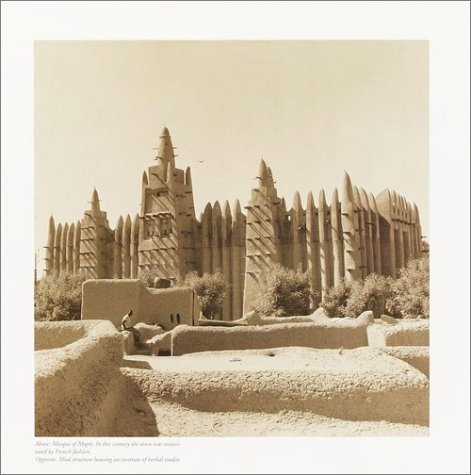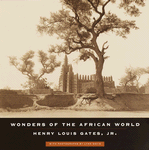|

MALI -- Mosque of Mopti
The mosque here is the second largest mosque in Mali after Djenne. It's the classical mud mosque with all the wooden structural supports. They remud it every year. In America, when you approach a town in the distance, if it's not a very big town, you can see the church steeple. With the mosques in Mali there's the exact same principle--the mosque is the center of every little city, every village no matter how small. Go to the tiniest little village and you wind your way into town in the center you will find the mosque. A lot of them probably conform to the style or the particular architecture in their respective area. Mopti and Djenne have this kind of form but there is a whole series of other mosques that have a different, more geometric structure. I tried to stop in every little town and take a picture of the mosque. You cannot go into the mosque if you are not Muslim, and I was not allowed to go in any of them. I mainly had to walk the outside.
The structural supports are used as a skeleton for the building, but they also function as ladders when the structures have to be re-mudded. The mud that's used is the local earth mixed with other things, and being that mud washes away, they have to be redone almost every year. All you see here then is a wood frame with mud applied, like the adobe structures in the southwest. There is a lot of personality to the mud buildings, because nothing is perfect, they are always changing, each little point has its little difference.
Another thing that I tried to emphasize in the toning is that, because the mud is made from the surrounding earth, it is all the same color: the earth and the buildings. For me there was this kind of magical sense that the mosques are magical palaces that rose up out of the earth.






Photographs (c) 1999 by Lynn Davis
|




